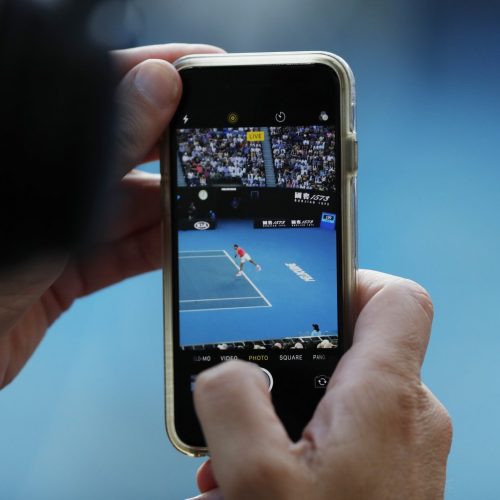Rugby Tackles New Technology With Impressive Results
Rory Nicolson is a graduate of the University of Stirling and currently Social Media Manager at rugbystore. A long suffering supporter of the Scotland and Edinburgh rugby teams, he creates content for rugbystore.co.uk.
When you think about rugby, what comes to mind? Muddy scrums, broken noses and crunching tackles? Most of us don’t think immediately think about statistics and game data. But with technology becoming a more prominent part of the game, it won’t be long before we’re discussing GPS as much as players, and Ref cams as much as tries.
Gone are the days when coaches could stand on the sidelines with a notepad to document the entire game. These days, fans want the game broken down into measurable data, and new technology means they’re getting what they want.
Referee cameras
A prominent figure in any rugby game, the referee is right in amongst the action. And while he runs up and down the pitch for the entirety of the game, he can’t possibly see (or record) everything that goes on. That’s where a Ref cam comes in. Available as a chest cam or to wear on the side of the head, the Ref cam allows access to every area of the game – a bold move for rugby. Ref cams were covered in a previous blog post, discussing how they are bringing spectators closer to the action and how this will affect the game. While adding a new perspective for fans, Ref cams also allow the opportunity for analysis of the game, which will be beneficial for future development.

Global Positioning System (GPS)
While performance in rugby was previously measured by time movement analysis, the only way to get an accurate result was to get a camera man to follow one player for the entirety of a game – meaning 15 camera men per team would be required to get the best recording of a single game. Time movement analysis typically records players’ movements, including; when they’re stationary, walking, jumping or jogging – and even sprinting and rucking/mauling. While this has been effective so far, players and fans want more. With the option to cleverly sew GPS tracking into new rugby kits (with no discomfort to the player), they can record more than ever before – including heart rate and fatigue levels.
Divided opinion
As with any changes in sport, there’s much debate about how effective these technological advances are in documenting the game. While some fans argue that all the technology in the world can’t make a great player, others argue that that’s not the intention of the latest tech improvements. However, monitoring data means acknowledging where the best players are succeeding and the weaker players are flagging, allowing the club to make changes. GPS is a huge leap forward for coaches, allowing them to monitor the performance of individual players and adjust their programmes accordingly.
The future
As social media begins to play a more prominent part in the world of sport, fans are eager to get closer to the action. While the likes of Twitter can post highlights as they happen, the spectators are always wanting more – and rightly so. Speculation on how a player performed can now be a thing of the past, thanks to advances in technology allowing the game to be broken down into accurate statistics. Love it or loath it, technology will play a prominent role in the future of rugby.
About author
You might also like
Mallory Group Launches White Paper on the ‘New Normal’ for Sports Rights Holders
Sport is proving to be one of the high-profile business casualties of the Covid-19 pandemic. However, its slow and structured return will be a key factor in life entering the
The seven essentials for achieving successful sports branding
By Daniela McVicker When it comes to sports, great branding is a must. Your brand influences how people see your company or team. It helps you to forge connections with
Live Chat: A New Social Experience in Sports
Article written by John S. Kim, CEO and co-founder of global API company SendBird Social media rose to prominence throughout the world due to its potential for connection. Social channels provided the








